Pietro Andrea Mattioli
Commentarii, in libros sex Pedacii Dioscoridis Anazarbei, de medica materia. Adiectis quam plurimis plantarum & animalium imaginibus eodem authore. Venice: Vincenzo Valgrisi, 1554
FIRST LATIN EDITION, AND FIRST ILLUSTRATED EDITION, folio (327 x 232mm.), numerous woodcut illustrations, all but one hand-coloured in an early modern hand, EXTENSIVE MARGINAL ANNOTATIONS BY THREE EARLY MODERN ANNOTATORS (in Latin, Spanish, and English), later vellum with yapp edges, probably supplied from another volume, red edges, lacking title-page, some preliminary leaves, and final text leaf (α1-3, α5, α7-8 lacking; α4, α6 used as pastedowns; α7, α8 lacking; Nn6 lacking), old tear extending across pp1, old staining from α4-b6 with slight loss of text, illustration of fish on p6 crudely cut out by an early reader, z1 torn at outer margin with loss of some text, marginal closed tears to f2 and g5
This edition includes the first appearance of this set of woodcuts by Giorgio Liberale and Wolfgang Meyerpeck. Mattioli is most famous for his work on botany and medicine, though he wrote on various subjects, and his translations of/ commentaries on Dioscorides' De medica materia are his best known writings. His first Italian translation from the Greek was published in Venice in 1544, and was produced with the practical purpose of providing doctors with a treatise which would enable them to identify the medicinal plants described by Dioscorides. The success of this edition, and subsequent expanded editions in Italian published in 1548, 1550, and 1552, encouraged Mattioli to translate the work into Latin. This particular copy is interesting for its annotations in the hands of three early modern readers. Two of these annotators appear to be continental owners, writing in Latin and Spanish respectively. The third, ?eighteenth century English annotator often writes the common English names of plants in the margins, occasionally accompanying these manuscript captions with a rhyming couplet (e.g. "No poyson fear | When Sage and Rue grow near" (p. 348)). However, this English reader clearly had a Classical education, and at the lower margin of the final index leaf transcribes the Latin inscription found on the tombstone of Mattioli in the Cathedral of Trento, suggesting that the book might perhaps have been acquired on a Grand Tour.
REFERENCES: Edit16 37627
Pietro Andrea Mattioli
Commentarii, in libros sex Pedacii Dioscoridis Anazarbei, de medica materia. Adiectis quam plurimis plantarum & animalium imaginibus eodem authore. Venice: Vincenzo Valgrisi, 1554
FIRST LATIN EDITION, AND FIRST ILLUSTRATED EDITION, folio (327 x 232mm.), numerous woodcut illustrations, all but one hand-coloured in an early modern hand, EXTENSIVE MARGINAL ANNOTATIONS BY THREE EARLY MODERN ANNOTATORS (in Latin, Spanish, and English), later vellum with yapp edges, probably supplied from another volume, red edges, lacking title-page, some preliminary leaves, and final text leaf (α1-3, α5, α7-8 lacking; α4, α6 used as pastedowns; α7, α8 lacking; Nn6 lacking), old tear extending across pp1, old staining from α4-b6 with slight loss of text, illustration of fish on p6 crudely cut out by an early reader, z1 torn at outer margin with loss of some text, marginal closed tears to f2 and g5
This edition includes the first appearance of this set of woodcuts by Giorgio Liberale and Wolfgang Meyerpeck. Mattioli is most famous for his work on botany and medicine, though he wrote on various subjects, and his translations of/ commentaries on Dioscorides' De medica materia are his best known writings. His first Italian translation from the Greek was published in Venice in 1544, and was produced with the practical purpose of providing doctors with a treatise which would enable them to identify the medicinal plants described by Dioscorides. The success of this edition, and subsequent expanded editions in Italian published in 1548, 1550, and 1552, encouraged Mattioli to translate the work into Latin. This particular copy is interesting for its annotations in the hands of three early modern readers. Two of these annotators appear to be continental owners, writing in Latin and Spanish respectively. The third, ?eighteenth century English annotator often writes the common English names of plants in the margins, occasionally accompanying these manuscript captions with a rhyming couplet (e.g. "No poyson fear | When Sage and Rue grow near" (p. 348)). However, this English reader clearly had a Classical education, and at the lower margin of the final index leaf transcribes the Latin inscription found on the tombstone of Mattioli in the Cathedral of Trento, suggesting that the book might perhaps have been acquired on a Grand Tour.
REFERENCES: Edit16 37627


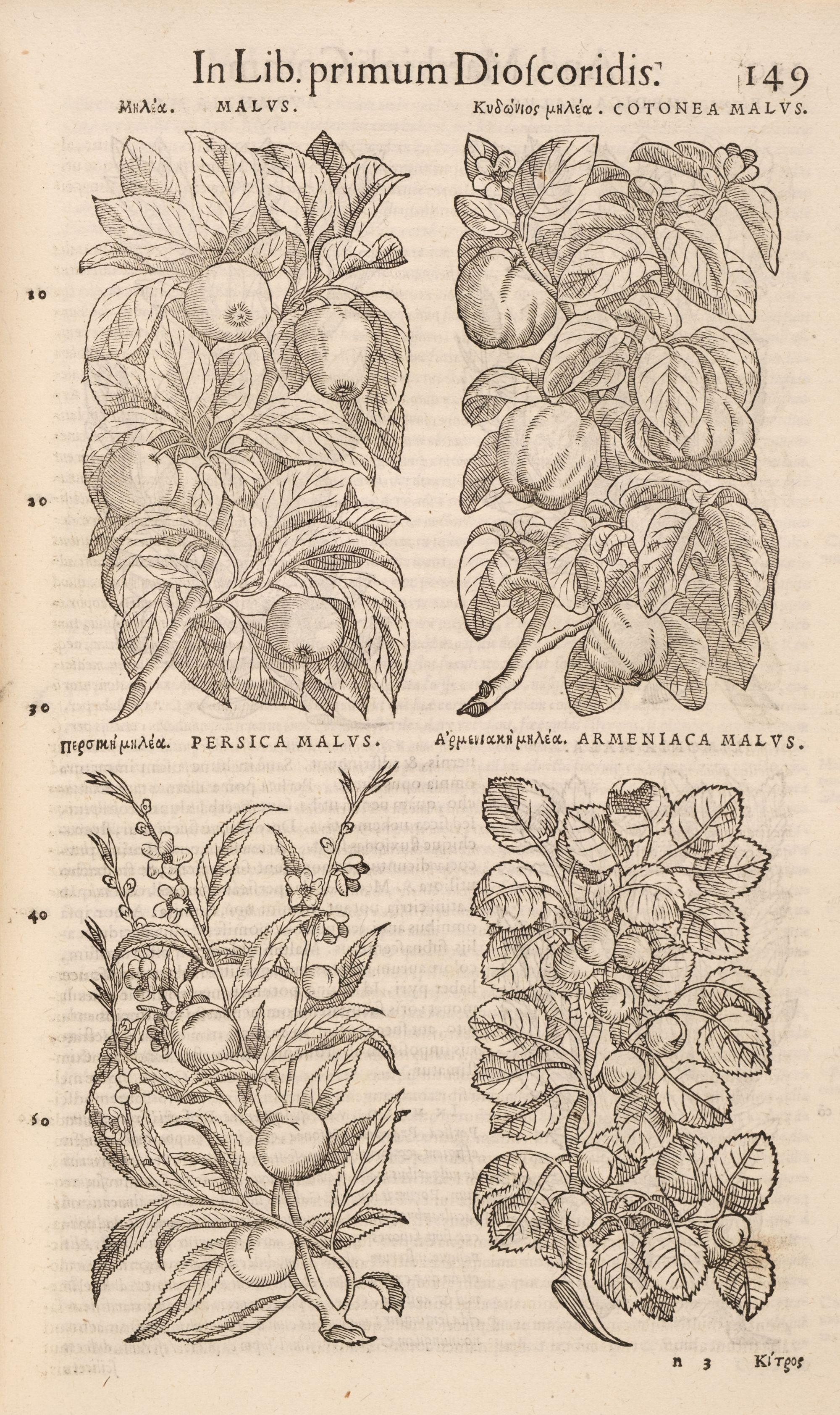

_--_dioscorides_pedanius_petri_andreae_matthio).jpg)
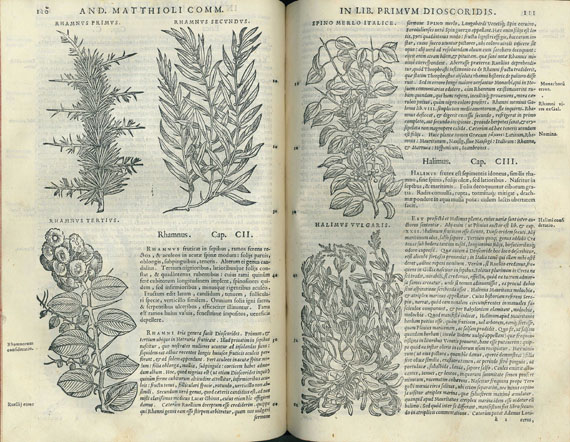
.jpg?w=400?width=1600&quality=70)

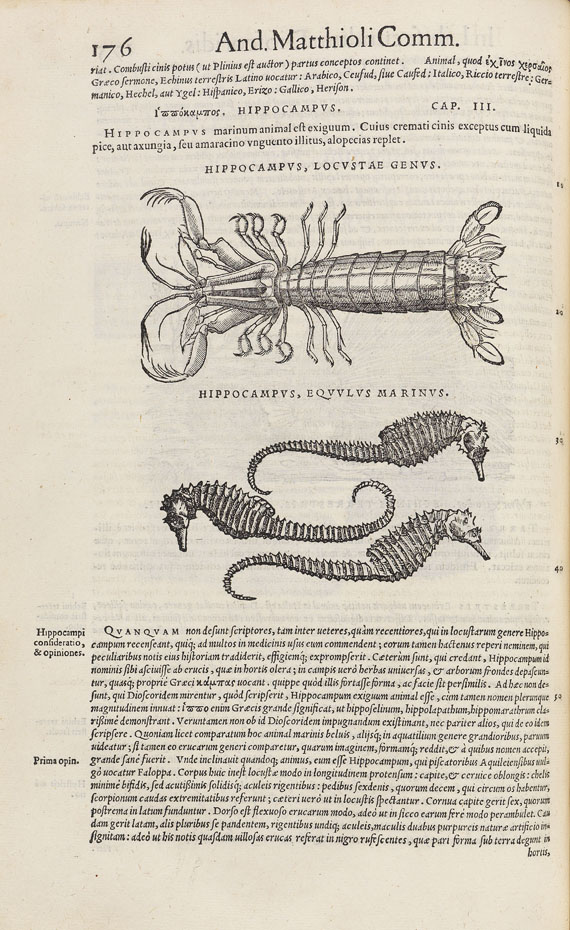
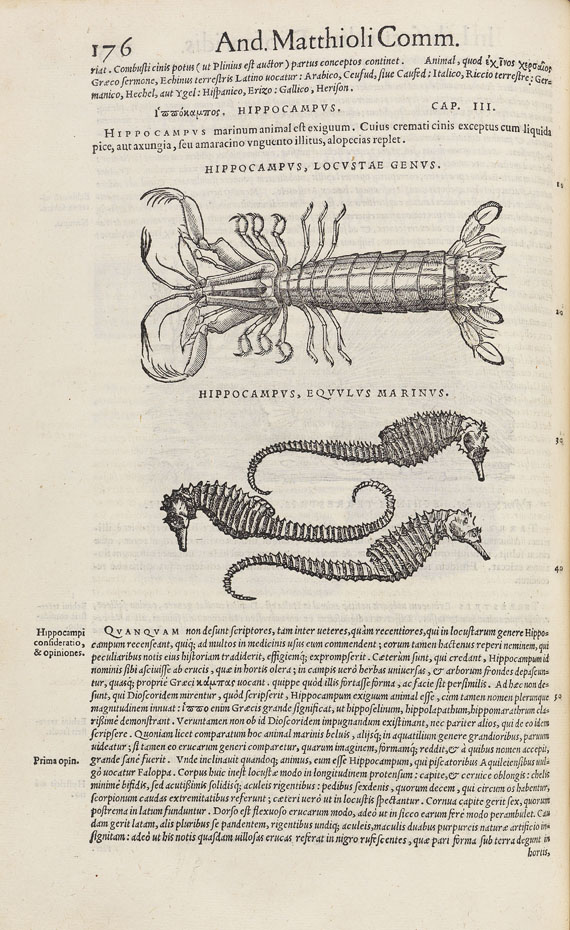
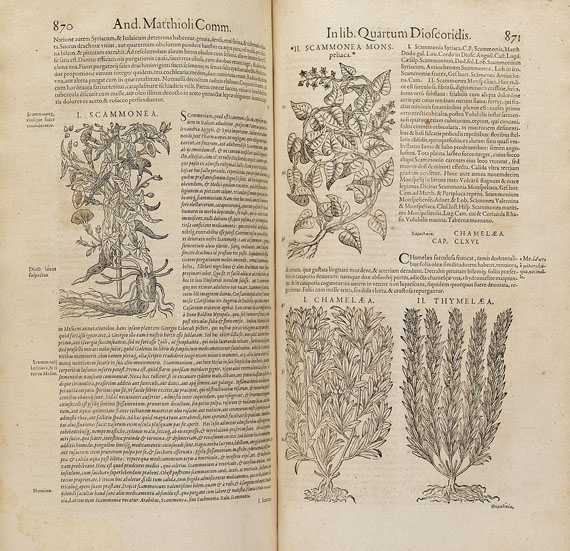




Testen Sie LotSearch und seine Premium-Features 7 Tage - ohne Kosten!
Lassen Sie sich automatisch über neue Objekte in kommenden Auktionen benachrichtigen.
Suchauftrag anlegen